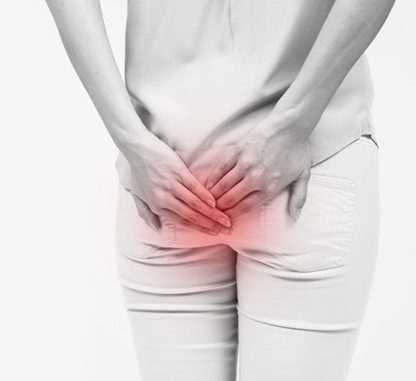
Hemorrhoids are one of the most common diseases in the world, affecting over 75% of the population under 50 years of age. Hemorrhoidal disease equally affects women and men.
The causes are not precisely known, but the main risk factors are chronic constipation, chaotic nutrition, sedentary, obesity, liver disease, smoking and excessive alcohol consumption.
In medical terms, hemorrhoids are practically a dilated vein of the rectum. They can be either internal or external. The external ones can be seen around the anus and can give great pain. They are basically veins covered by skin that have swollen and are blue in color.
Internal hemorrhoids are more difficult to diagnose because they do not hurt. They appear inside the anal canal, and are not visible. The blood stool could be one of the first signs to warn the patient about the presence of internal hemorrhoids.
Diagnosis of hemorrhoids is done by the proctologist specialist after local examination, rectoscopy or colonoscopy.
Colonoscopy excludes other more serious pathological lesions such as colon cancer, the presence of certain polyps or colitis, diseases that are accompanied by bleeding.
Symptoms
The first symptom is anal bleeding. Other symptoms associated with the presence of hemorrhoids are: burning and itching sensations, a certain prominence in the rectal area, fistula, anal abscess, inflammation, discomfort.
Treatment
The appropriate treatment will be determined according to their type, size, and stage. In early stages, admission is not mandatory, and treatment is not surgical. Thus, the treatment consists in trying to eliminate the causes that led to the appearance of hemorrhoids: unhealthy diet, sedentary, obesity, constipation.
Non-surgical methods are mainly targeted at internal hemorrhoids in less advanced stages. The most commonly used method is elastic ligature. There is also a method called medical photocoagulation, which uses infrared or laser, as well as cryotherapy.
In severe cases with complications, most often the only possible treatment is surgical. It aims at the removal of hemorrhoids by excision and is performed in the hospital under general or local anesthesia. The healing period for this type of surgery is between 6 and 8 weeks.
Prevention
Going to the toilet at the same time of day, everyday, that is to say, creating a habit to empty the intestines regularly is a preventive measure against hemorrhoidal diseases recommended by many specialists.
Constipation should be also avoided as much as possible, by adequate fiber consumption. Hydration is also important. Jogging, exercise, or even taking short walks on a daily basis can help reduce the risk of hemorrhoids.
Another commonly recommended way of preventing the appearance of hemorrhoids is limiting the consumption of alcohol and spicy foods.



Leave a Reply